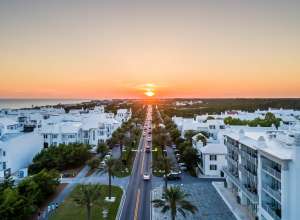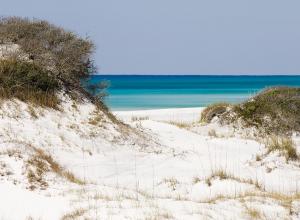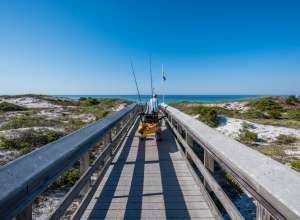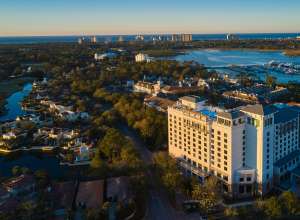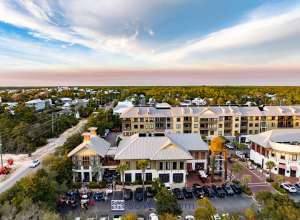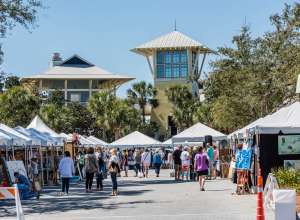Grayton Beach History
If you walk down one of Grayton Beach's oak-shaded roads, you may have the feeling things don't change very fast here. Pine, magnolia and oak trees surround many of the old wooden homes, letting you know the homes have been in place longer than the trees have been. This south Walton County village, which celebrated its 130th anniversary July 4th, 2020, stakes a claim as one of the area's oldest communities.
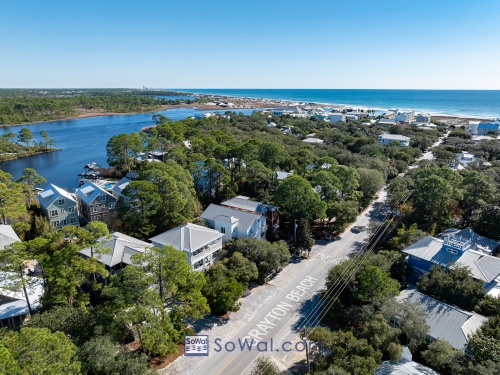
Grayton Beach had its beginnings when an Army major, Charles T. Gray, built a homestead here about 1885, according to the telling of the village's history by the Coastal Heritage Preservation Foundation. At the time, the federal government owned much of the land and a few people had reason to settle here. The soil was too sandy to farm and there were better timberlands inland.
The closest settlement was about five miles to the north, at Point Washington on Choctawhatchee Bay. Gray got some neighbors in 1890 when Army General William Miller and William Wilson moved their families here and mapped out where the village's streets and blocks would be built. The named their new community after Gray. The last building still standing in Grayton Beach that is thought to date back to about 1890 is a two-story home, known once as the Wash-A-Way, at the end of County Road 283. Although there's not much left of the old Wash-A-Way as it was "modernized" recently and sadly a piece of Grayton history was lost.
Around the turn of the century, Grayton Beach was trying to be a popular vacation retreat for families from the inland towns of Northwest Florida and Alabama. Reaching Grayton Beach from the north was not easy. There were no bridges over the southern parts of the Choctawhatchee River, and what roads existed were merely sand trails crossing miles of low-lying forests.
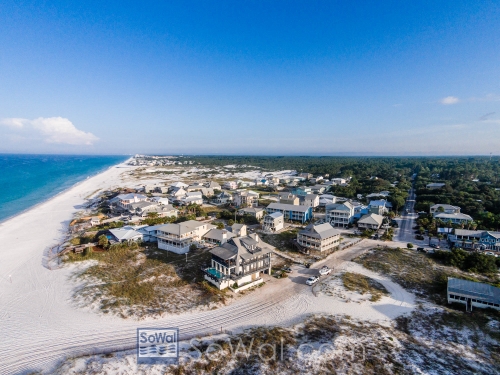
Among those to make the day long trip from DeFuniak Springs to Grayton Beach in 1913 were W. H. Butler and his son, Van R. Butler. The Butler family was to become the village's leading promoter. The Butler family didn't intend at first to make Grayton Beach their home, Van R. Butler said in an interview before passing in 2000.
The family had moved from the Midwest to DeFuniak Springs and there Butler's father worked with a real estate agent. W. H. Butler started a resort project near the Bay County line at Phillips Inlet. But when he visited Grayton Beach he found he could have the village's land at half the price of Phillips Inlet, and he bought most of what is now Grayton Beach.
"People had pretty much abandoned the place, " Van R. Butler said of the Grayton Beach his father bought. There were just four or five houses."
Building a family home and starting a vacation resort from nothing wasn't easy for the Butlers.
"I didn't like it at all, " Butler recalled. "I had to cut out the woods, survey trails and stake it out."
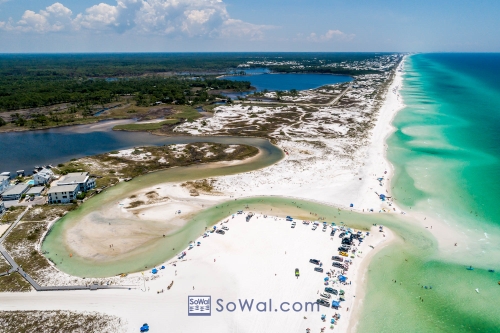
While the Butlers were trying to make Grayton Beach a resort, their neighbors to the east on Western Lake, the Millers , were grazing upwards of 10,000 head of cattle and any number of hogs on the open land. And the hogs didn't always understand where pasture ended and a home's front yard began.
"The hogs were all over the place, " Butler said. "They would get under the house and have a big time."
In the early '20's, Butler left Grayton Beach to study at the University of Florida, where he earned an education degree. He returned to Grayton Beach in 1926 to start his own homestead and teach, first in Santa Rosa Beach and later at the Point Washington school. Butler got back to Grayton Beach just in time to survive the hurricane of 1926, the same storm that is credited with creating Destin's East Pass and turning Choctawhatchee Bay into a saltwater body. The hurricane also swept out the foundation of Grayton Beach's largest home, giving it the name the Wash-A-Way. The storm blew away a good portion of the dunes, leaving the beach flat and hard enough, Butler said, that he and a friend drove a Model T along the shoreline to see what was left of Destin.
The 1930s saw Grayton Beach and SoWal County become much easier for the rest of the world to reach. Highway 98 was completed, the Highway 331 bridge was built and the Intracoastal Waterway was cut through Walton. As the 1940s arrived, electricity was brought to the village by the Choctawhatchee Electric Cooperative.
Encroaching civilization brought an end to the Millers' cattle ranch. When the state started requiring cattle herds to be fenced in, south Walton's days as a cattle country were over. The Millers moved their herd north of Choctawhatchee Bay to Freeport. In those days, Grayton Beach was almost exclusively a summer resort. During the winter even Butler and his wife, Helen, a Schoolteacher, would move their household to Point Washington where he was school principal.
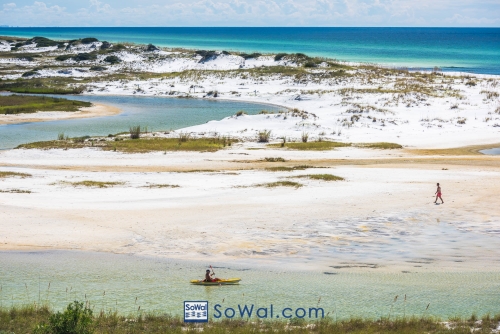
When the summer tourist season arrived, the Butlers would move back to Grayton Beach were they rented cottages, sold an occasional lot and operated the village's only store and Saturday night dance hall (site of the present-day “Red Bar”).
"We'd have 100 people here on a Saturday night." Butler recalled. "People would come from as far as Destin to dance. There were cars parked all out there." Butler said a soft-drink salesman once told him: "The year before the war we sold more Coca-Cola than any store in Fort Walton Beach."
World War II was something of a boon to Grayton Beach. In 1942, the U. S. Coast Guard established a 40-man station here, with the federal government renting many of the homes for barracks and offices. The Coast Guard didn't leave many permanent marks on Grayton Beach. In the Wash-A-Way you can find the name of one guardsman written in ink on the wall of a closet he used as a darkroom.
Another wartime marking was the phrase "Grayton Beach" and an arrow pointing north, painted in yellow across CR 283. From the air, pilots used the marking to determine where they were, said Art Jones, a retired air Force colonel and member of the Coastal Heritage Foundation.
Butler retired as principal of the Point Washington School in 1960, but he kept the honorary title of "mayor of Grayton Beach". Many of Grayton Beach's residents live in homes built by Butler or on lots sold to their families year ago by the Butlers.
Political and natural barriers have kept Grayton Beach a village. What few efforts there have been to build large condominium projects here have met with furious opposition from most of the community's residents. Natural barriers to large-scale development in the quarter-mile-square community are lakes to its east and west and the Gulf of Mexico to the south.
The state has done its part to keep Grayton Beach small by virtually surrounding the village with park land. In 1967, the state used its land east of the town to create the Grayton Beach State Recreation Area. In 1985, after years of lobbying by residents, Florida bought the village's beach front and the dunes and forest land to the west and north.
When the state tried to trade away parts of the 1985 purchase for land at Topsail Hill, many Grayton Beach residents and neighbors howled in protest. The land swap fell through when the state and Topsail's owners could not come to terms.
The most recent hurricane to bring the Gulf of Mexico over dunes and into Grayton Beach was Opal in 1995. Western Lake overflowed, leaving water knee deep in many houses, and had residents washing loads of sand and mud out of their homes. There was little damage that couldn't be repaired. Although dunes shifted, the 40-year-old-plus homes stayed put. Like those homes, people aren't easily moved from Grayton Beach. Once people spend a summer vacation here, they often find a way to come back.
Butler's children---Van Ness, Janice and Gretchen-- have homes in Grayton Beach. Tracts have been set aside for the grandchildren.
"We didn't have a lot of the so-called advantages, but we did right well by them." Butler said of his children. And Grayton Beach has done right well, too.

